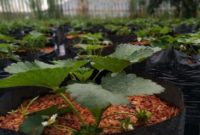Water is essential to keeping a lawn or garden in good health. The trouble with watering is that it can be time-consuming, especially if your idea of watering is standing outside with the hose. But thanks to irrigation systems, watering has become a lot less hands-on.
An irrigation sprinkler or drip system takes much of the work out of watering a landscape. Some can also be fitted to deliver fertilizer and weed-prevention products to a lawn. But before any digging takes place, homeowners might want to learn about the advantages and disadvantages of irrigation systems.

Advantages of Automatic Irrigation Systems
One of the most obvious advantages is the time savings afforded by an automatic sprinkler or drip irrigation system. Once installed, many systems can be set to a timer to water at specific time intervals and on certain days of the week. This means there’s no need to worry about forgetting to water the lawn and coming back from vacation to find crisp, yellow grass.
Another advantage is that irrigation systems, particularly the drip type, can be positioned so that water is more effectively targeted where it is needed. Nozzles can be adjusted, and underground drip tubes will deliver water right to the roots, rather than spraying walkways and driveways.
Another advantage is that automatic irrigation systems are generally hidden from view, which means there are no unsightly hoses stretched across the lawn and no more tripping hazards. Sprinkler heads pop up to spray and then retract when the job is done. Underground drip systems do their work out of view. For families with young children and pets who share outdoor spaces, automatic systems may be a safer option.
Disadvantages of Automatic Irrigation Systems
The primary disadvantage associated with a sprinkler system is the expense. These systems can be quite costly depending on the size of the property. Furthermore, portions of the lawn will have to be dug up to install pipework and attach it to the plumbing system of the home. This can equate to days or weeks without use of the yard. Afterward, the landscaping will have to be repaired.
It is best to install an irrigation system before installing sod or extensive landscaping because some of it will have to be torn up. Homeowners who already have pristine yards may be turned off by this reality.
Even the most efficient sprinkler systems can have their pitfalls. Wind can wreak havoc on sprinklers, directing water in the wrong direction. Underground pests may damage water-delivery systems, resulting in water pooling or broken parts. The repairs to fix an irrigation system can be much more costly than replacing a damaged garden hose.
Irrigation systems have their advantages and disadvantages, and homeowners should weigh their options before installing a new system.
